In the late 19th century Czarist Russia sent prisoners to this remote island in its Far East, which then was the home of various indigenous people. Only 120 years later expats from all over the world seek their fortune here working for Shell, Exxon or Sakhalinsk Energy. This is the story how I found my way here.
Why Sakhalin?
During a trip to Kamchatka in 2016 I met Sereen, a native of London, who works as an engineer in Yuzhno-Sakhalin. The oil business has turned Yuzhno into a boomtown, rich in oil and gas deposits.
I expected an ugly, mosquito-infested grim Soviet style city and arrived in a cozy, well-kept, squeaky-clean town. Neat flower beds line the streets that are constantly swept and the park near the train station is a children’s paradise. Kids slash in the small pools at Lenin Park and cool off in the fountains during the hot summer. I loved walking along the shady roads and soon found my favorite café.
Another great choice was my accommodation, the Hotel Gagarin, near Yuri Gagarin Park of Culture and Rest. Behind this Soviet style name hide a lovely quite park and a little amusement area, where I spent lots of time watching the children enjoying themselves. I even went up the fairy-wheel from where you get an excellent view of Yuzhno, for very little money .
Sakhalin’s History
In the various museums I learned about the history and the people of Sakhalin. Since the stone age, the indigenous Ainu people, also present on Hokkaido in Japan, populated the southern half of the island. A small group of Sakhalin Ainu still lives on the island, but most were moved to Japan after the end of WWII. The largest group of the islands original population is the Nivkh tribe of the northern taigas.
Japan’s influence on Skahlin goes back all the way to the 17th century when Japan started colonizing the island from the south calling it Karafuto. Russia started on the other end, in the north. Until the final days of WWII Sakhalin remained divided, when Soviet troops invaded the Japanese half. After the end of the war, the Japanese and most Ainu people were forcefully repatriated to Japan. A sizable Korean minority, forced labour brought by the Japanese, remained on the island and were denied repatriation until the last years of Soviet rule, though many still remain on Sakhalin.
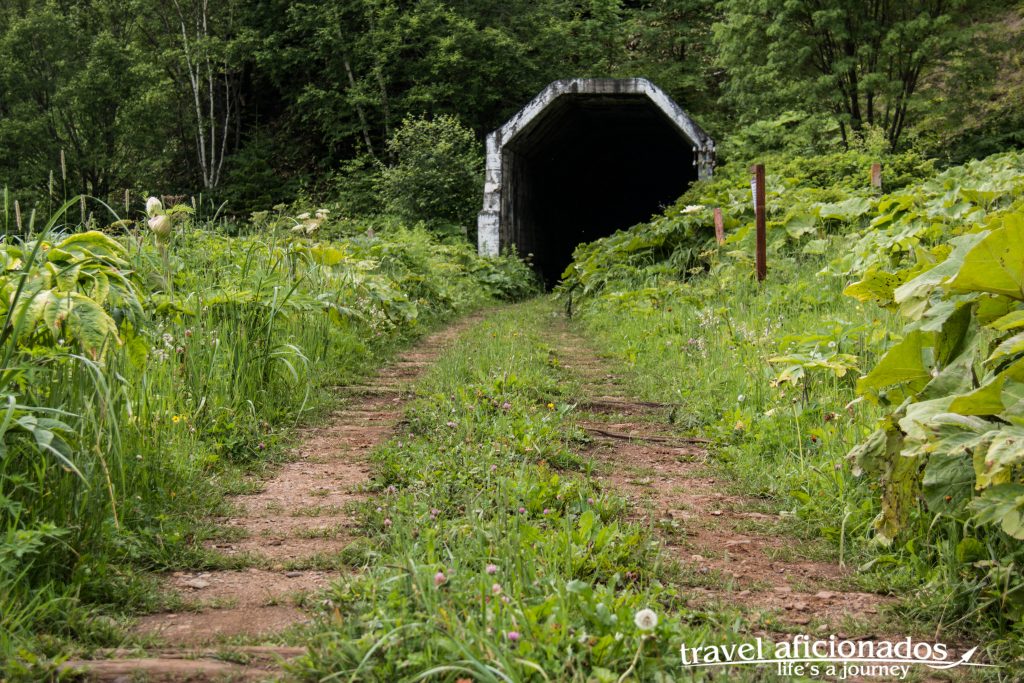
Railway line built by the Japanese to trade coal and other goods from Yuzhno Sakhalinsk to the port town of Korsakov back in the Japanese colonial days
The origin of what is now Yuzhno Sakhlinsk, the capital of Sakhalin, dates back to the late 19th century when Czar Nickolai had prisoners sent to the island to work with hand and feet shackled in heavy iron. Anton Chekhov visited the island in 1897 and described the horrid conditions of the prisoners in his book “The Island of Sakhalin”. I truly regretted not to have read to book prior to my visit. A video in the Chekhov Book Museum in Yuzhno describes the inhuman working conditions, unfortunately only in Russian, but the images left a lasting impression.
Mingling with the expats
I benefited a lot from knowing a local person. Seeren’s friends took me along on some outings, the expat community is very active and I only got a small taste of their activities. One of them organized a walk to the large mosaics that adorn many buildings built during Soviet days. All of the images glorify the achievements of Soviet Russia and its heroes, soldiers, farmers, miners, the whole lot. It was during that walk that I became aware of the wide spaces of green between the apartment blocks. I could not help but admire the foresight of the city planners in Soviet days, to create a little park between the houses. Unfortunately many of them have been partially turned into parking lots.
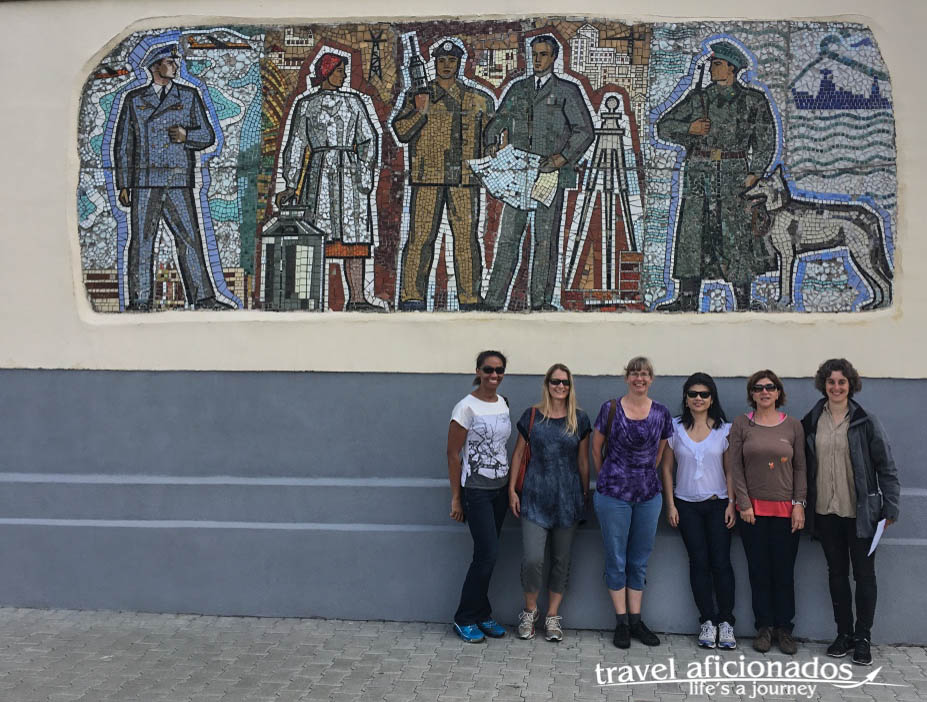
Mosaics on buildings in Yuzhno, glorifying the Soviet working class. Seeren’s friends took me along on this outing.
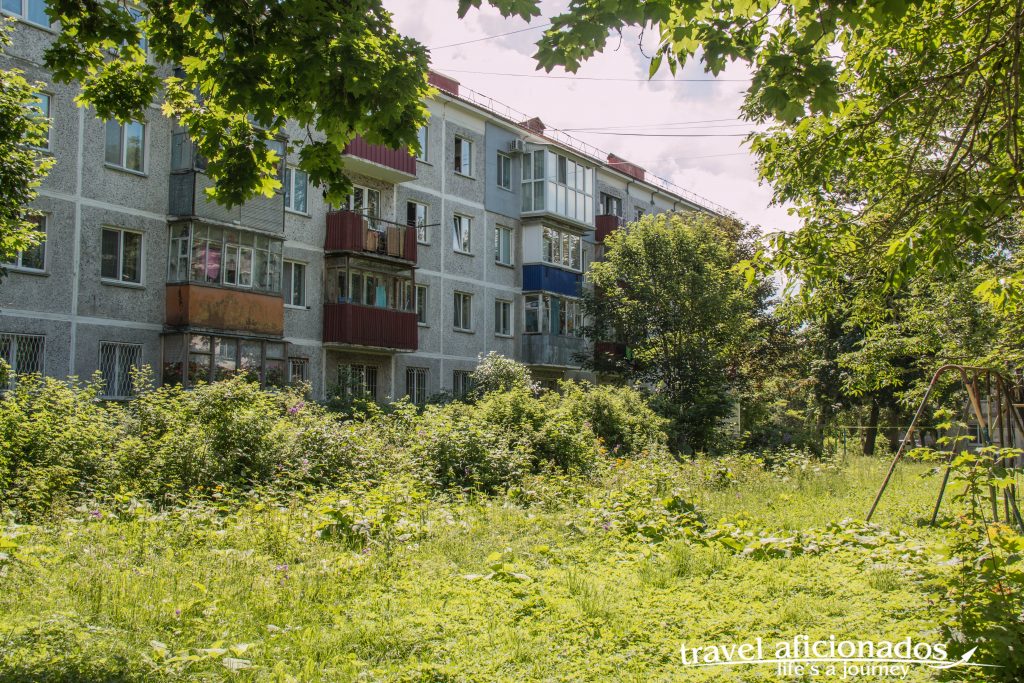
Soviet city planners left a wide stretch of green in-between apartment blocks, no often used as parking lots
Another excursion took me fossil-hunting. Organized by lovely, super organized Brenda we drove outside of Yuzhno to an old quarry. In the beginning it seemed that I was out of luck, I spent a frustrating hour digging the ground bent down. Eventually Brenda taught me what to focus on and I took home two impressive pieces of fossil. The reward was a delicious picnic, since all the ladies had brought home-made dishes and I was pampered with salads, dips and cakes, feeling a bit guilty since I had arrived empty-handed.
One day I joined a small tour group to the abandoned Japanese railroad tracks and to Mud Rock. The latter is not really spectacular, all that is left from the one-time eruption is a pile soil, but I truly loved the hike along the railroad track. The path follows the railway line built by the Japanese to trade coal and other goods from Yuzhno Sakhalinsk to the port town of Korsakov back in the Japanese colonial days. Though the tracks have been removed, the tunnels are in excellent condition and traces of steel dating back to 1890 from Sheffield England, can be seen.
Sight-seeing in Yuzhno
The architecture of Sakhalin Regional Museum is the most obvious reminder of its Japanese past, it served as the government office of the Karafuto prefecture during the rule of Imperial Japan. My favorite section was the one that informed of the indigenous people of Sakhalin. The buildings’s picturesque design attracts newly wed couples to have their photos taken and release doves into the sky.
In the Chekhov Book Museum I could have learned everything about the writer’s stay on the island, if I spoke Russian. Copies of his famous book “The Island” can be seen in the dusty shelves, in many languages. In videos actors re-tell the horrid living and working conditions of the prisoners sent to the island at the end of the 19th century.
A few churches with shining golden domes cannot be missed, the Cathedral of The Nativity I passed on the way from the airport and I went back to check out the huge memorial next to it. Like so many memorials it is devoted to the soldiers who lost their lives in the Great War. An even more impressive one commemorates all Soviet soldiers who fell in the conquest of Southern Sakhalin and the Kuril islands in 1945.
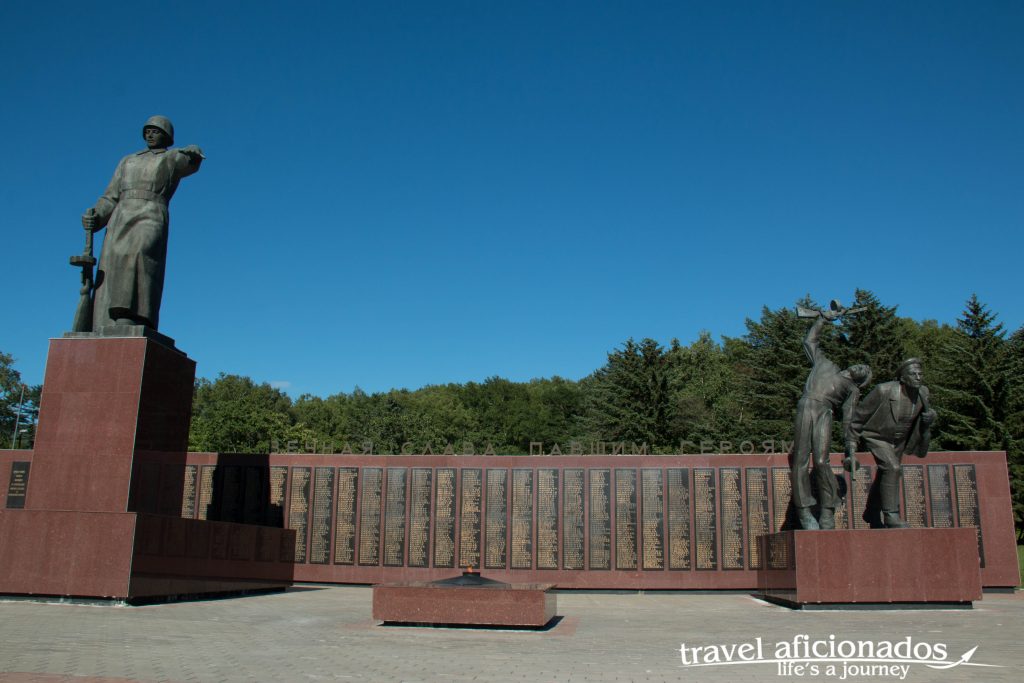
Memorial for those Soviet soldiers who fell in the conquest of Southern Sakhalin and the Kuril islands in 1945.
Lenin Square next the train station is popular with locals and tourists alike. A gigantic statue of Lenis overlooks the flowerbeds and pools with little fountain where children cool off in the summer heat. A huge bolder reminds of the victims of the Neftegorsk earthquake that killed over 2000 people people in May 1995.
Gorny Vozduk is the place to go for the most exquisite views of the city, especially at night as the city’s lights are a mesmerising contrast to the small towns of other regions in Sakhalin. It is also a ski slope during the winter
Future travel-plans to Sakhalin
Sakhalin Island is extremely scenic, the perfect place for out-door people. If you love kayaking, trekking, boat trips, camping, mountain biking in untouched wilderness, you are in the right place. In order to reach these places you need a car or a tour company, I even discovered one that advertised in English. Tourism has certainly not developed yet, but the potential is enormous. Sunshine and balmy temperatures is what I remember, but my new expat friends insisted it is even nicer in the winter. I certainly know that I will be back one day to explore more of the island of Sakhalin. During the week of my stay I pretty much walked everywhere in Yuzhno, but only did two trips to the surroundings. Such future travel will definitely include a trip to Kunaschir, the island south of Iturup. My epic trip to this Kuril Island also started from Sakhalin and will never be forgotten.

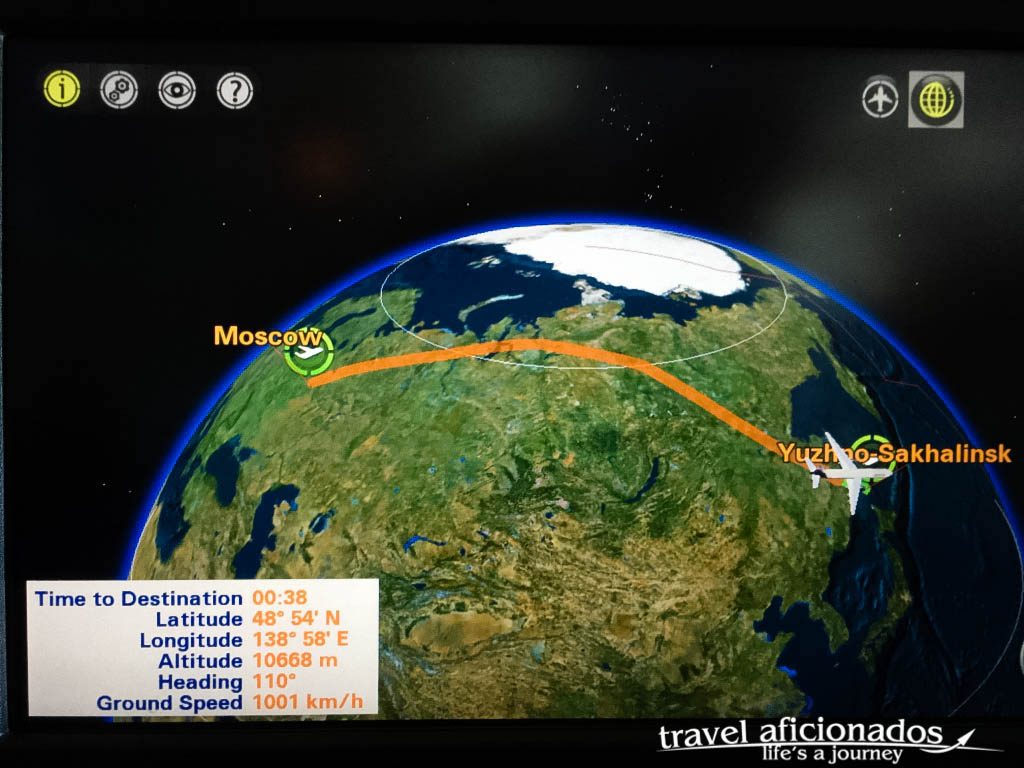

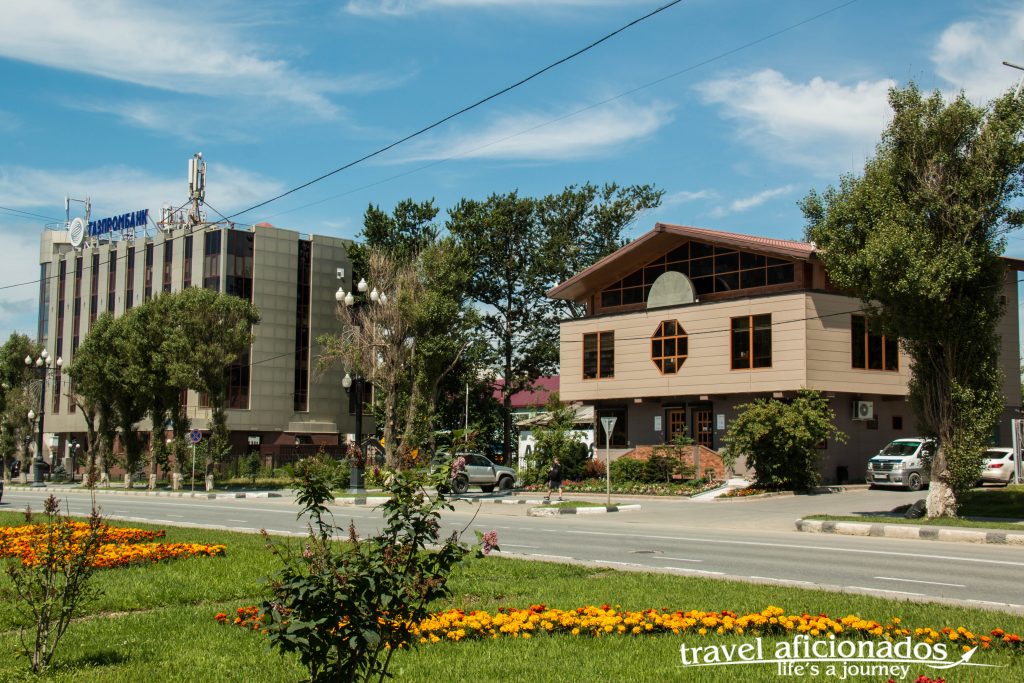

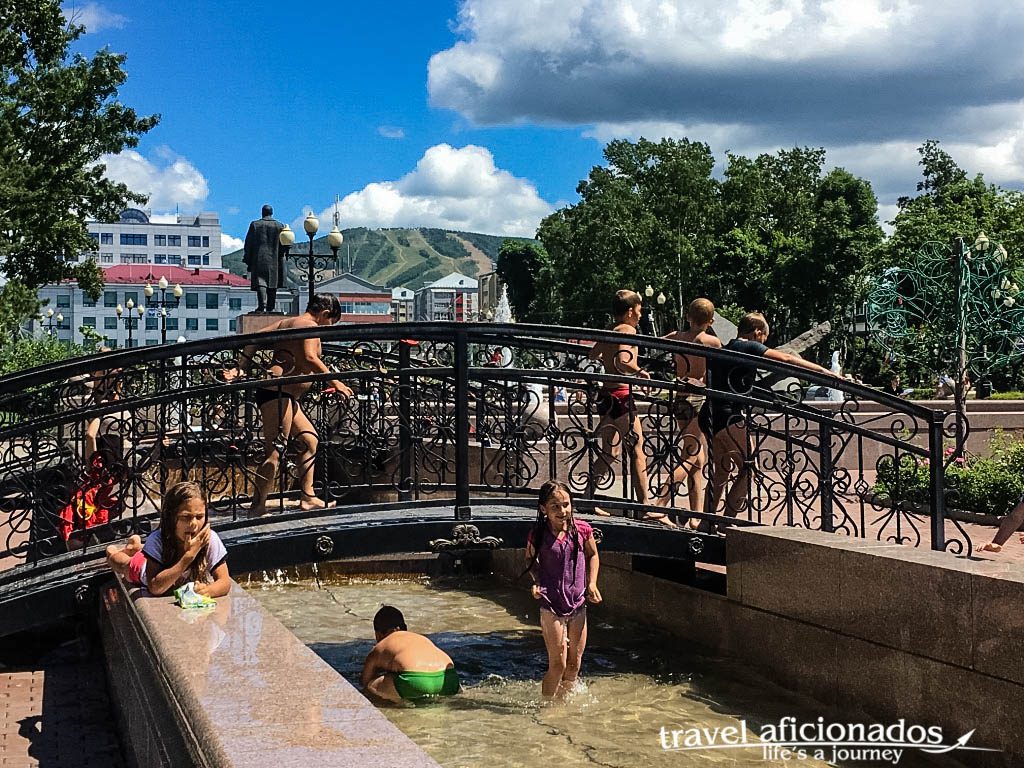
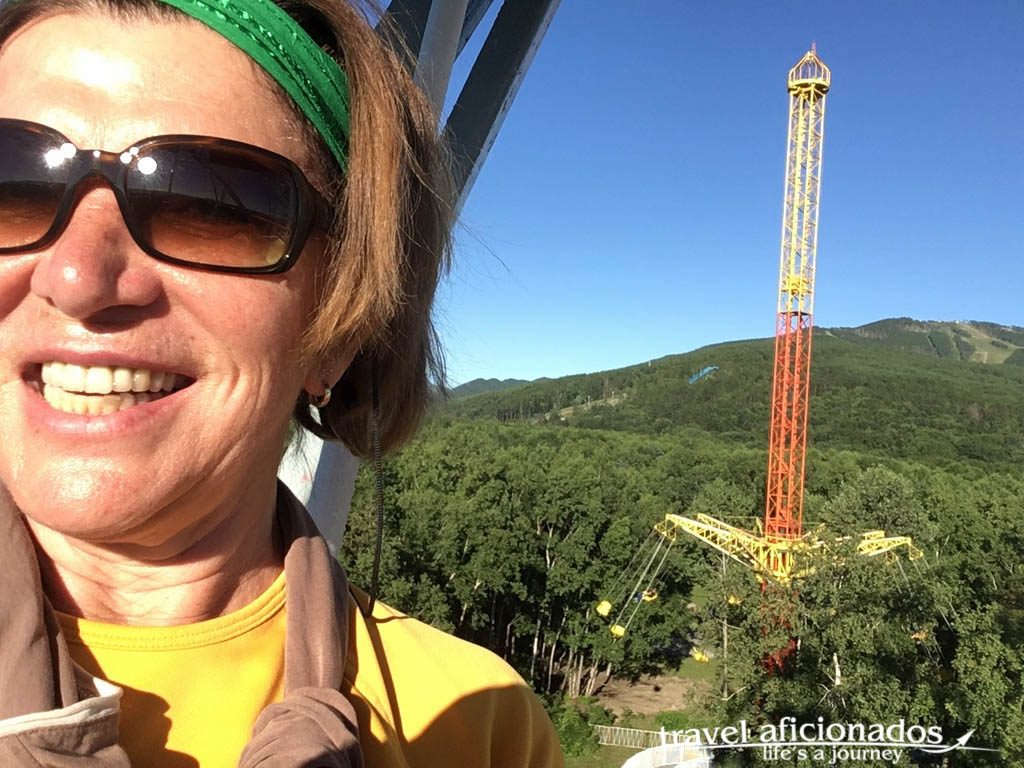


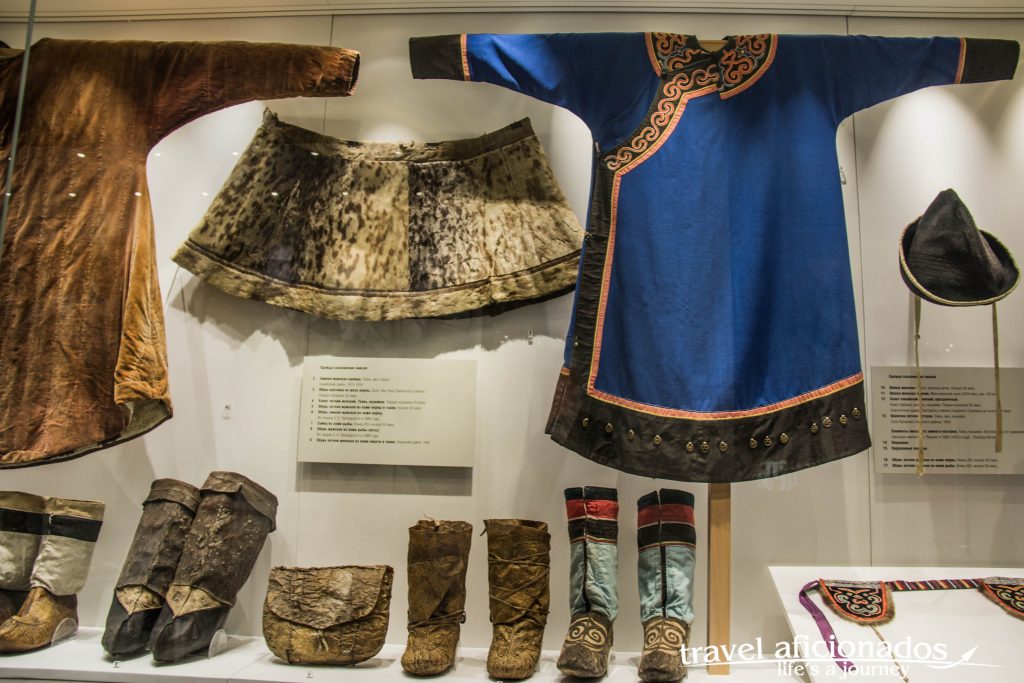
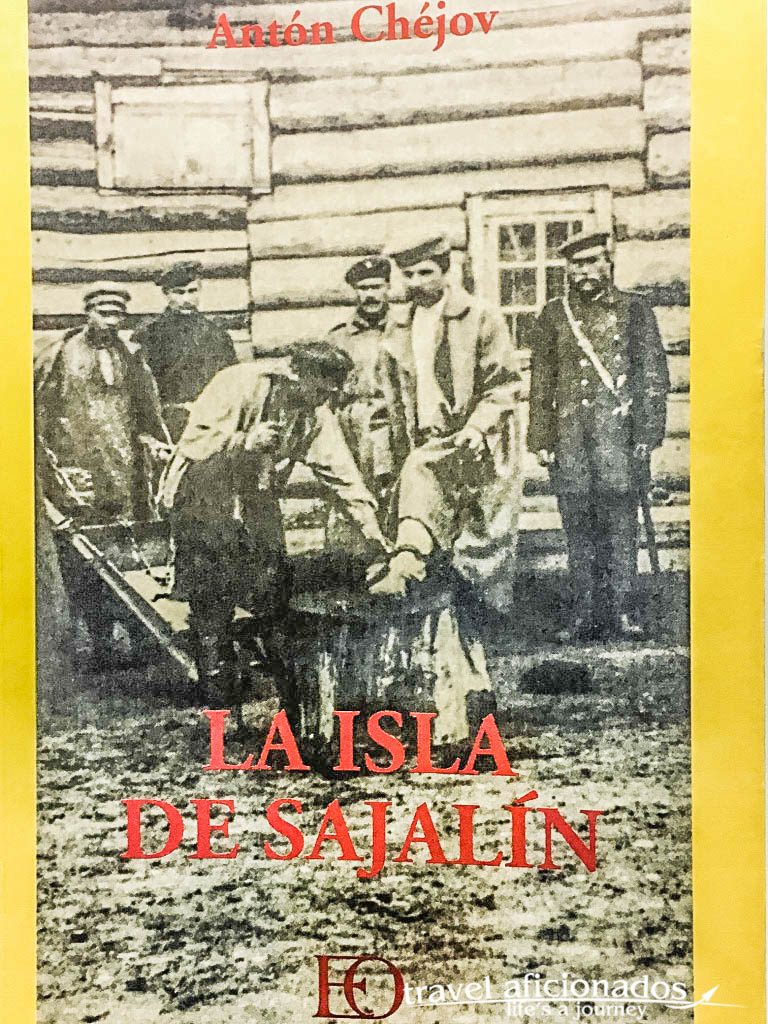
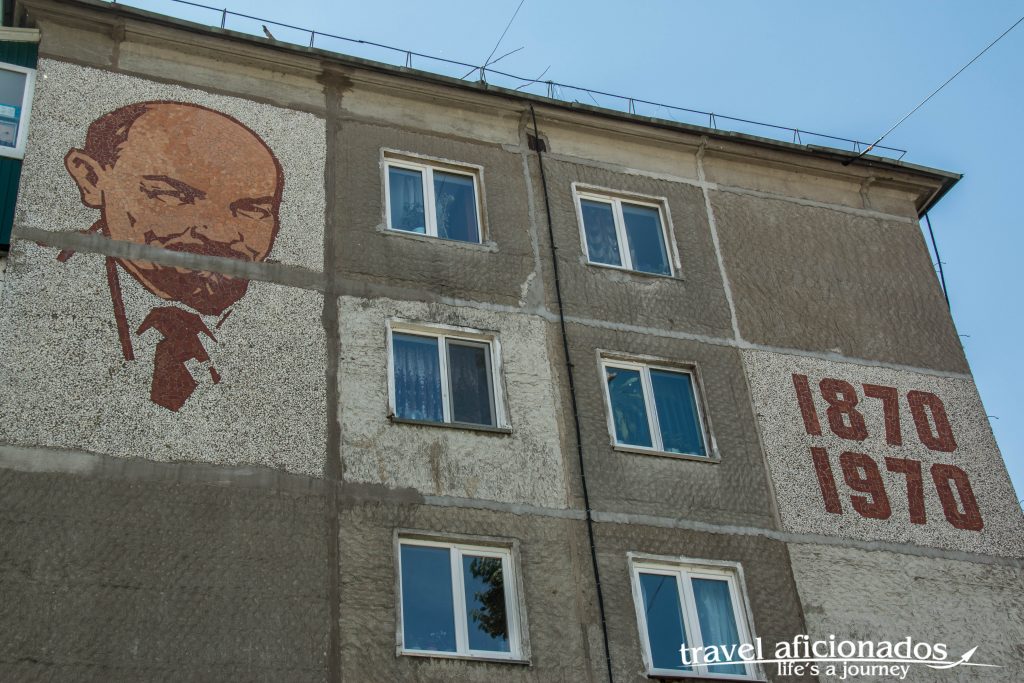
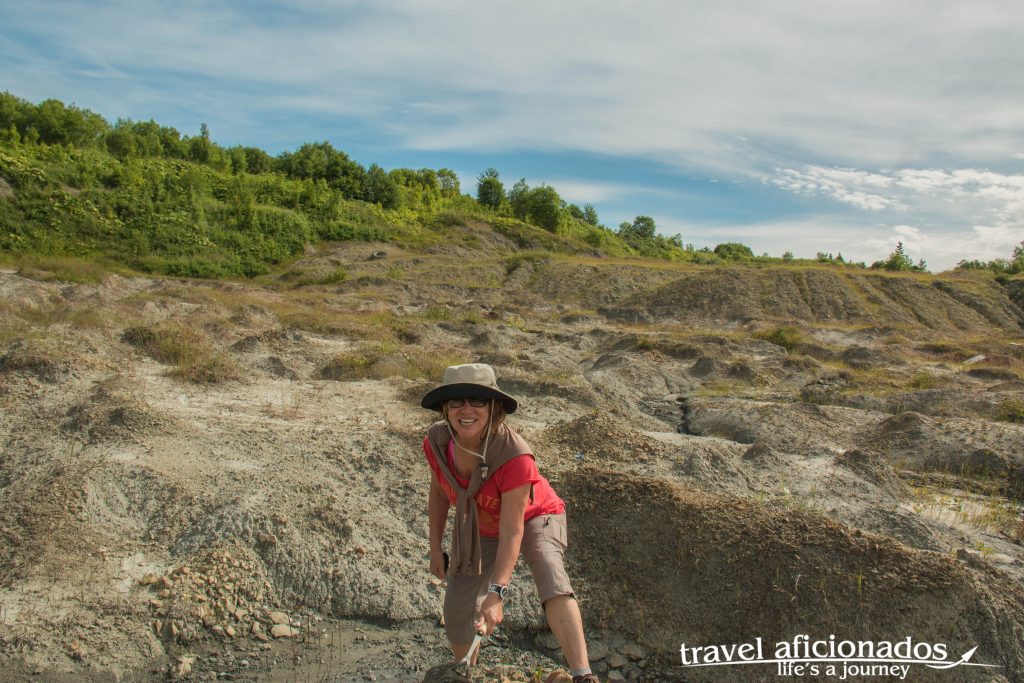
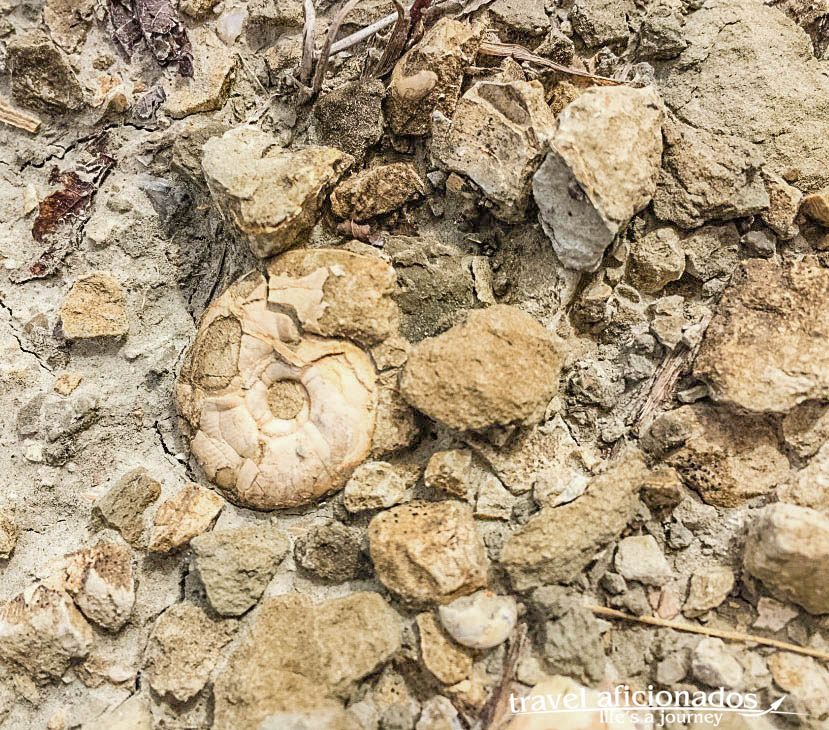
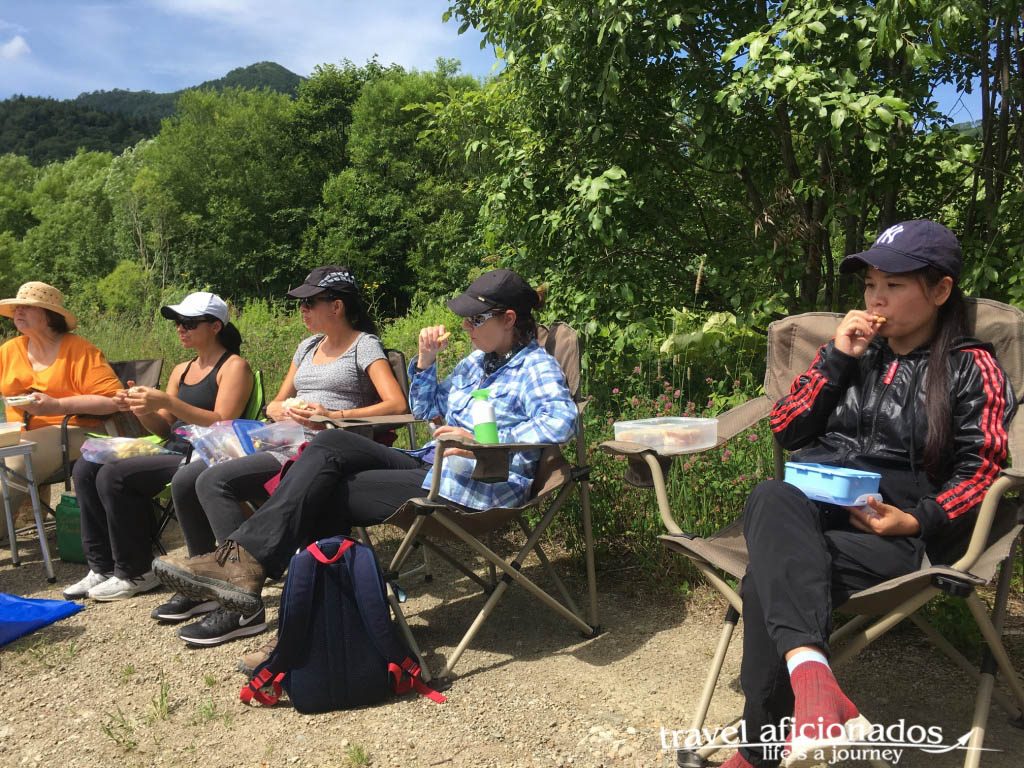
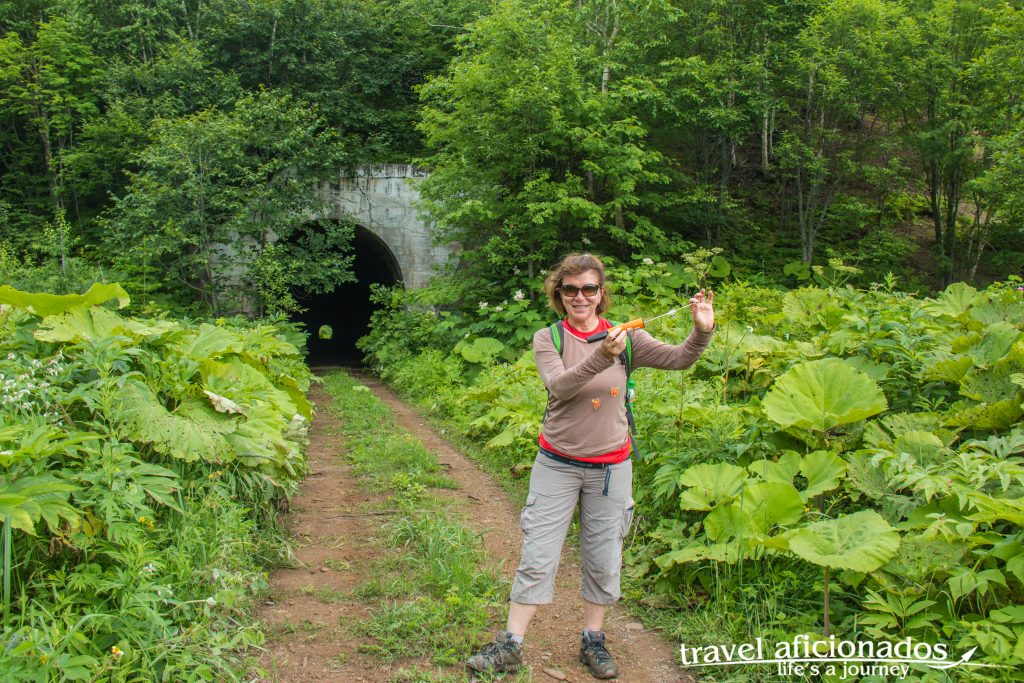
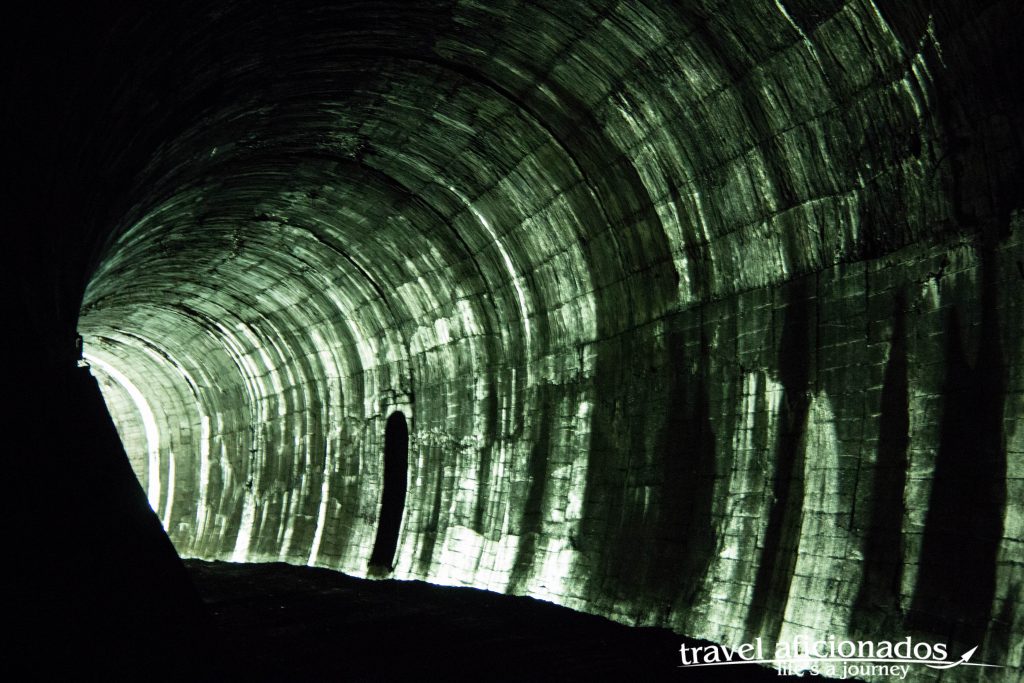
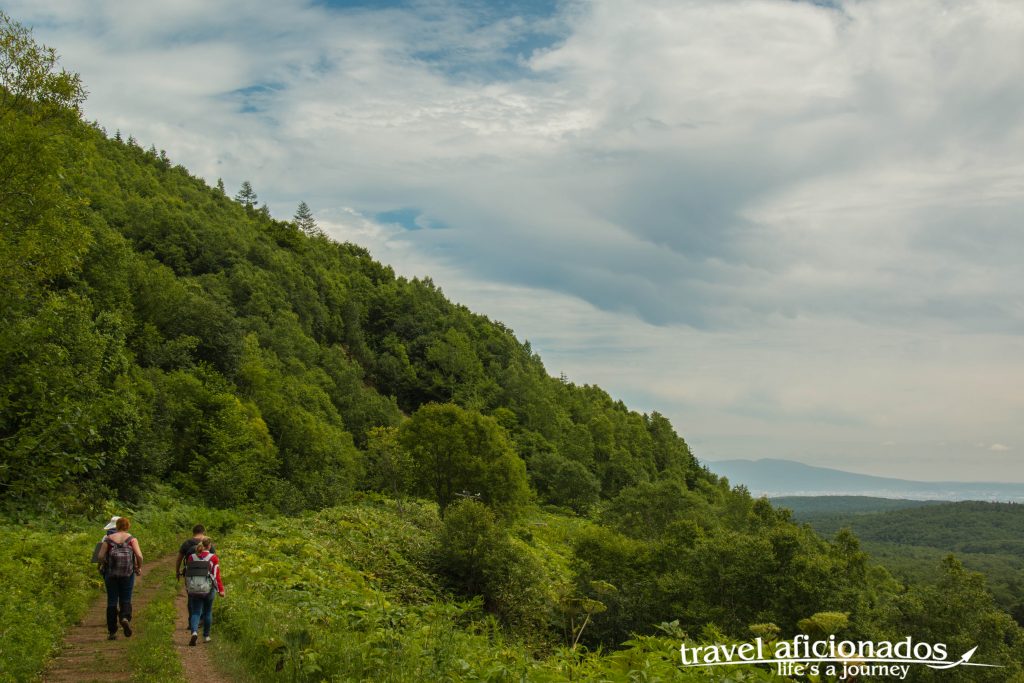
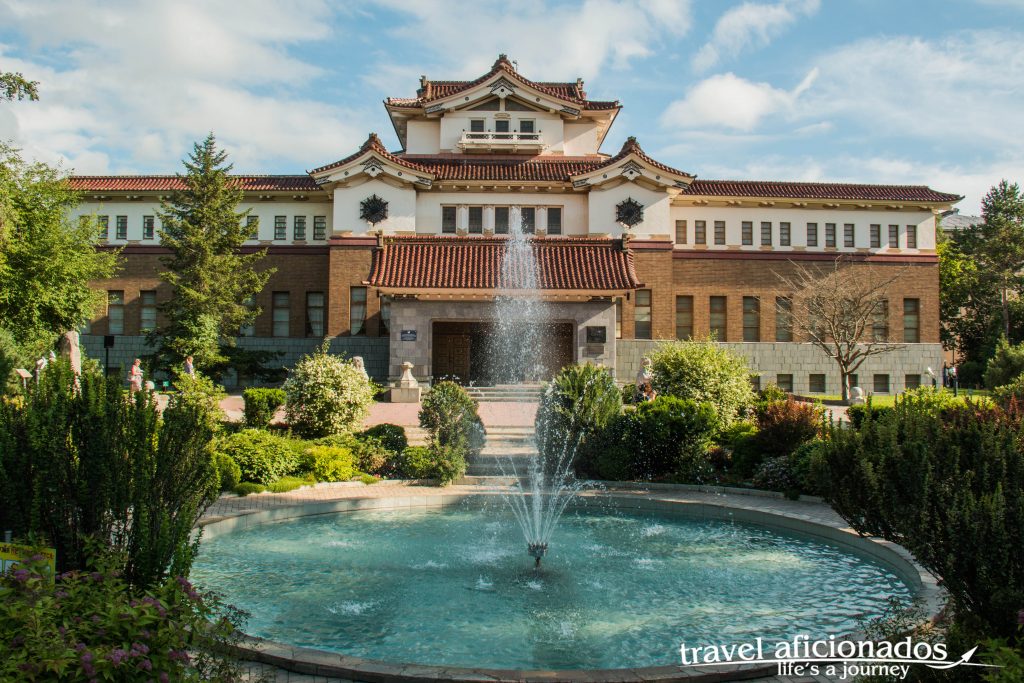

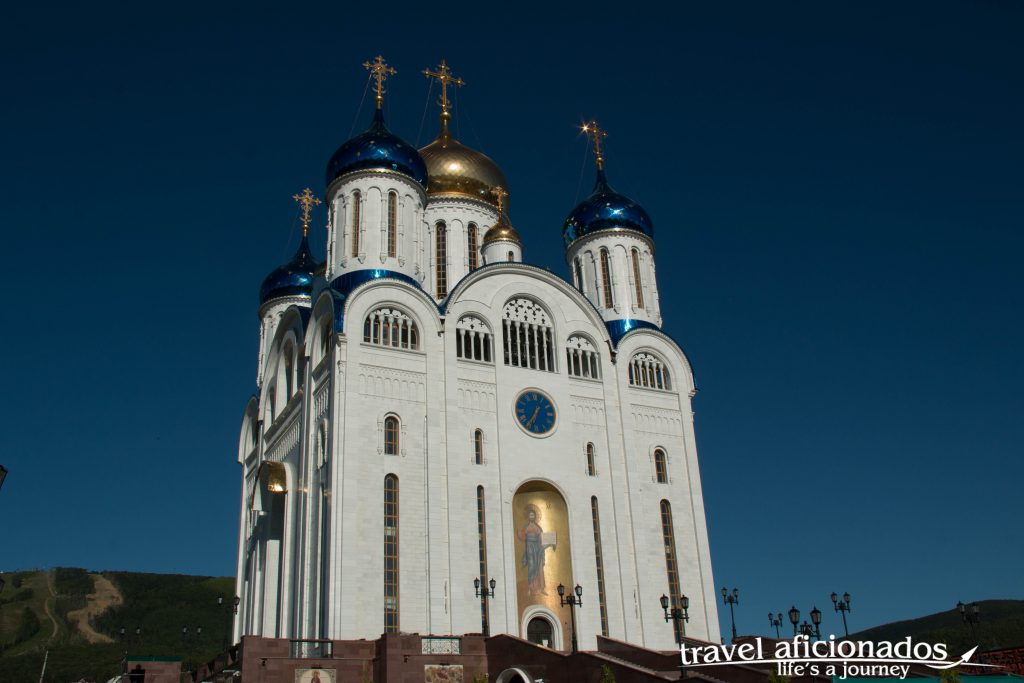
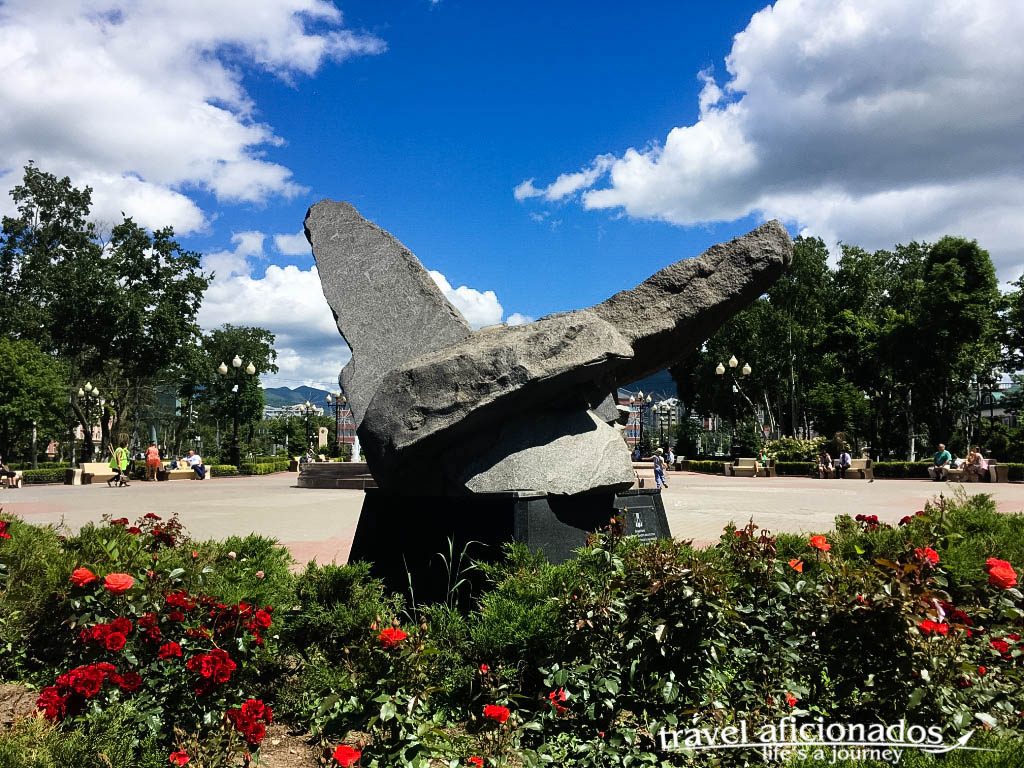
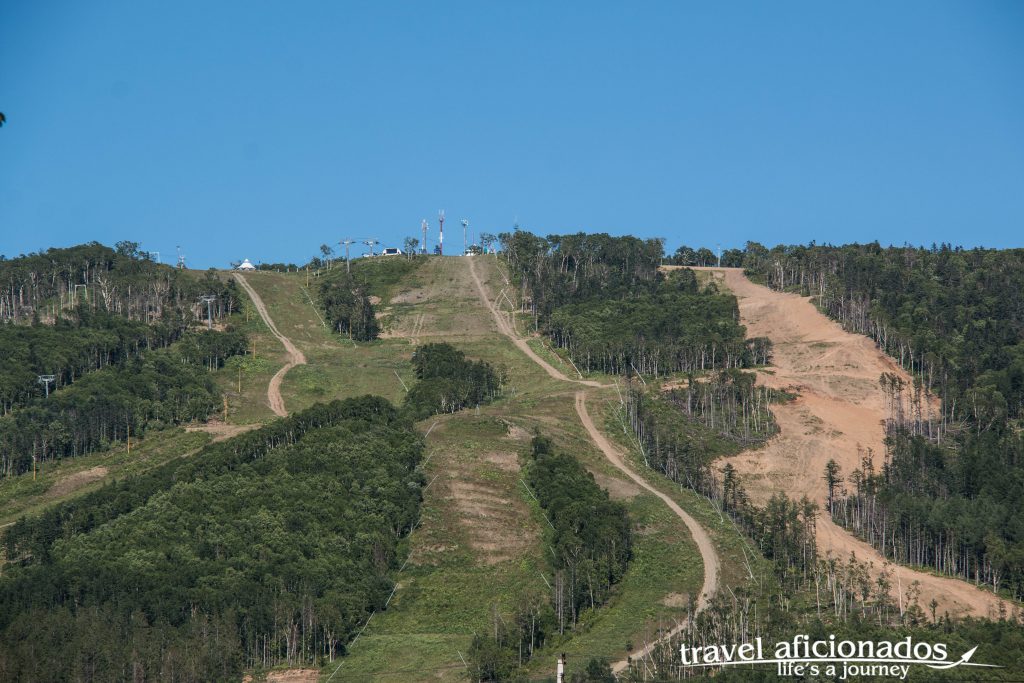
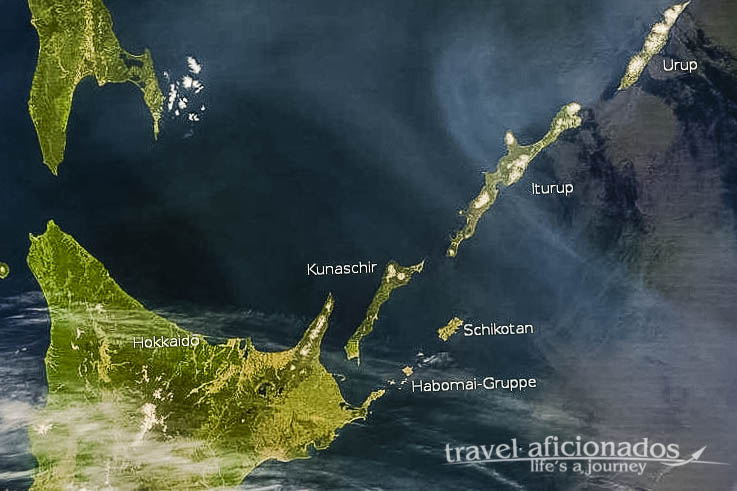
No comments yet.